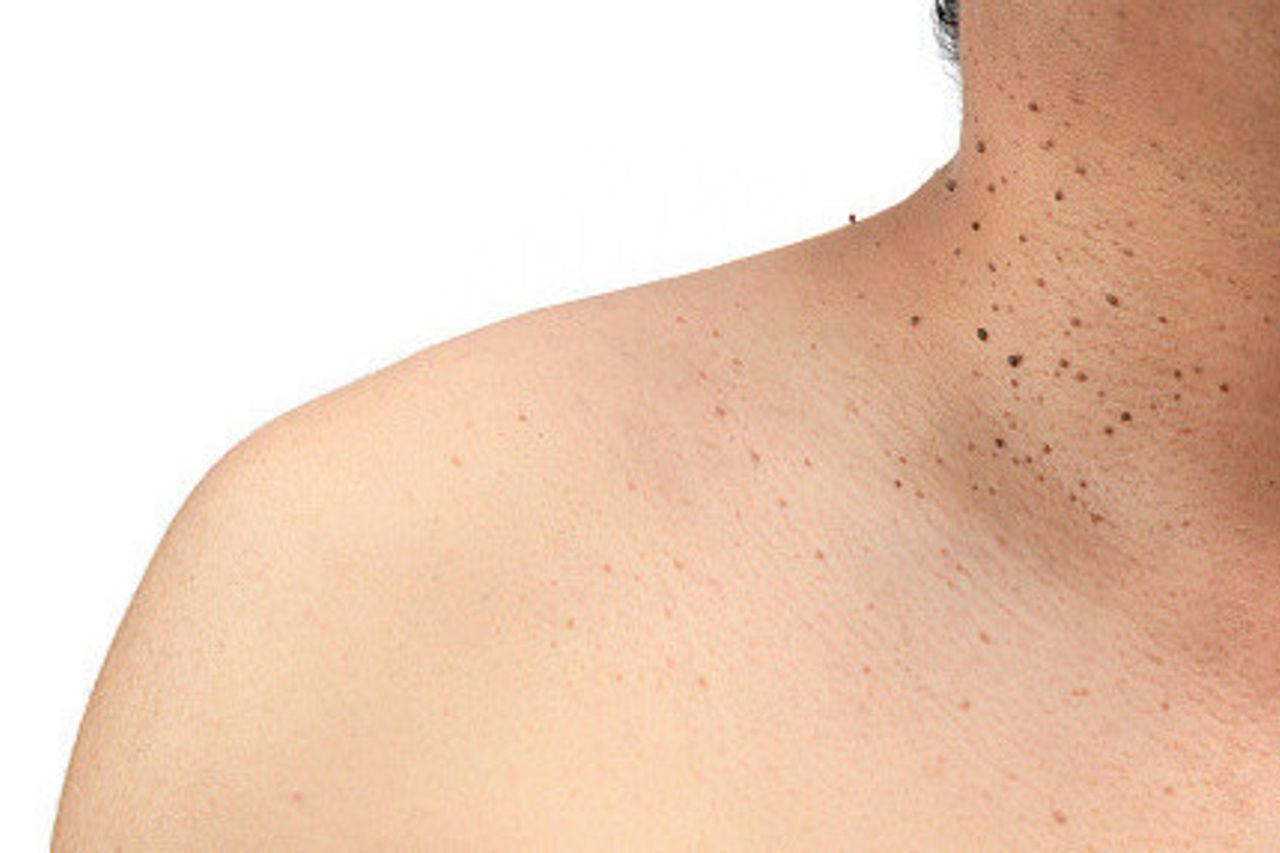
Ever noticed a small, soft growth on your skin and wondered what it is? Those little flaps of skin are called skin tags. They’re harmless but can be annoying or unsightly. Skin tags often appear in places where skin rubs against skin, like the neck, armpits, or groin. While they’re common, many people don’t know much about them. Are they dangerous? Can they be removed at home? Why do they even form? This blog post will answer these questions and more, giving you 45 facts about skin tags. Get ready to become a skin tag expert!
What Are Skin Tags?
Skin tags are small, benign growths that often appear on the skin's surface. They are usually harmless but can be a cosmetic concern for some people. Here are some interesting facts about skin tags:
- Skin tags are also known as acrochordons.
- They are made up of collagen fibers and blood vessels.
- Skin tags are typically flesh-colored or slightly darker.
- They can appear anywhere on the body but are most common in areas where skin rubs against skin.
- Skin tags are usually small, ranging from 1 to 5 millimeters in diameter.
- They can sometimes grow larger, up to a few centimeters.
- Skin tags are more common in adults than in children.
- They are often found in the armpits, neck, and groin areas.
- Skin tags can also appear on the eyelids.
- They are not contagious and cannot be spread from person to person.
Causes of Skin Tags
Understanding what causes skin tags can help in managing and preventing them. Here are some key facts about the causes:
- Skin tags are often caused by friction from skin rubbing against skin.
- Obesity increases the likelihood of developing skin tags.
- Hormonal changes during pregnancy can lead to the formation of skin tags.
- Genetics can play a role; if your parents had skin tags, you might too.
- People with diabetes are more prone to skin tags.
- Skin tags can develop in areas where jewelry or clothing causes friction.
- Aging increases the risk of developing skin tags.
- Some studies suggest a link between skin tags and insulin resistance.
- Human papillomavirus (HPV) has been found in some skin tags, suggesting a possible viral cause.
- Skin tags can form in areas where the skin has been damaged or irritated.
Symptoms and Identification
Identifying skin tags correctly is crucial for proper management. Here are some facts to help you recognize them:
- Skin tags are usually painless.
- They can become irritated if rubbed frequently.
- Skin tags are soft to the touch.
- They often have a stalk, or peduncle, that attaches them to the skin.
- Skin tags do not change color over time.
- They do not bleed unless they are irritated or damaged.
- Skin tags are not cancerous and do not turn into cancer.
- They can sometimes be mistaken for warts or moles.
- A dermatologist can easily diagnose skin tags through a visual examination.
- Skin tags can sometimes fall off on their own without treatment.
Treatment Options
While skin tags are harmless, some people choose to remove them for cosmetic reasons. Here are some treatment options:
- Skin tags can be removed by cutting them off with sterile scissors.
- Cryotherapy involves freezing the skin tag with liquid nitrogen.
- Electrosurgery uses electrical energy to burn off the skin tag.
- Ligation involves tying off the skin tag with a thread to cut off its blood supply.
- Over-the-counter treatments are available but should be used with caution.
- Dermatologists can remove skin tags quickly and safely.
- Home remedies like apple cider vinegar are popular but not scientifically proven.
- Removing skin tags at home carries a risk of infection.
- Skin tags can sometimes grow back after removal.
- Insurance may not cover the cost of skin tag removal as it is often considered a cosmetic procedure.
Prevention Tips
Preventing skin tags can save you the hassle of dealing with them later. Here are some tips to help you avoid skin tags:
- Maintain a healthy weight to reduce skin friction.
- Keep skin folds dry and clean.
- Avoid wearing tight clothing that can cause friction.
- Use gentle skincare products to avoid irritation.
- Regularly check your skin for new growths and consult a dermatologist if needed.
Final Thoughts on Skin Tags
Skin tags, those small, harmless growths, are more common than you might think. They often appear in areas where skin rubs against skin or clothing. While they don't pose any serious health risks, many people choose to remove them for cosmetic reasons. Methods range from over-the-counter solutions to professional medical procedures. Remember, it's always a good idea to consult a healthcare provider before attempting removal, especially if you're unsure about the growth.
Understanding skin tags can help you make informed decisions about your skin health. Whether you decide to leave them be or opt for removal, knowing the facts ensures you're not caught off guard. So next time you spot one, you'll know exactly what you're dealing with. Stay informed, stay healthy, and take care of your skin!
Was this page helpful?
Our commitment to delivering trustworthy and engaging content is at the heart of what we do. Each fact on our site is contributed by real users like you, bringing a wealth of diverse insights and information. To ensure the highest standards of accuracy and reliability, our dedicated editors meticulously review each submission. This process guarantees that the facts we share are not only fascinating but also credible. Trust in our commitment to quality and authenticity as you explore and learn with us.


